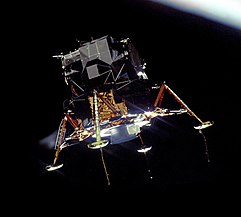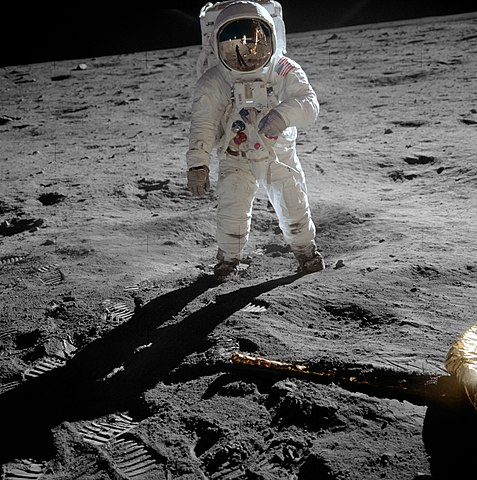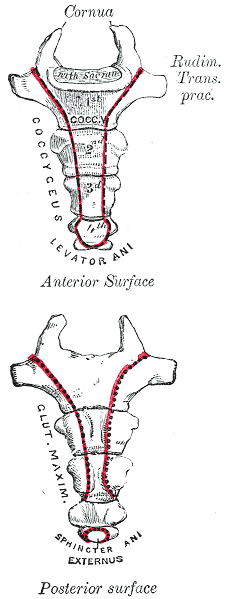We just learned about the Ranger - 4 Spacecraft.
First we launched satellites into outer space.
Then we sent people up to orbit the earth.
Next we sent a spacecraft with no people to land on the moon.
So who was the first to put a person on the moon?
The Apollo 11 mission by the United States was the first manned spacecraft to land on the moon,
on July 20th 1969.

(from: wikipedia - apollo 11)
The two astronauts Neil Armstrong and Buzz Aldrin were the first astronauts to ever set foot on the moon.

When Neil Armstrong first put his foot on the moon he said the famous words:
That's one small step for man, one giant leap for mankind.
Wow!
Isn't it just amazing to look up into space at the moon and know that someone actually walked on it?






